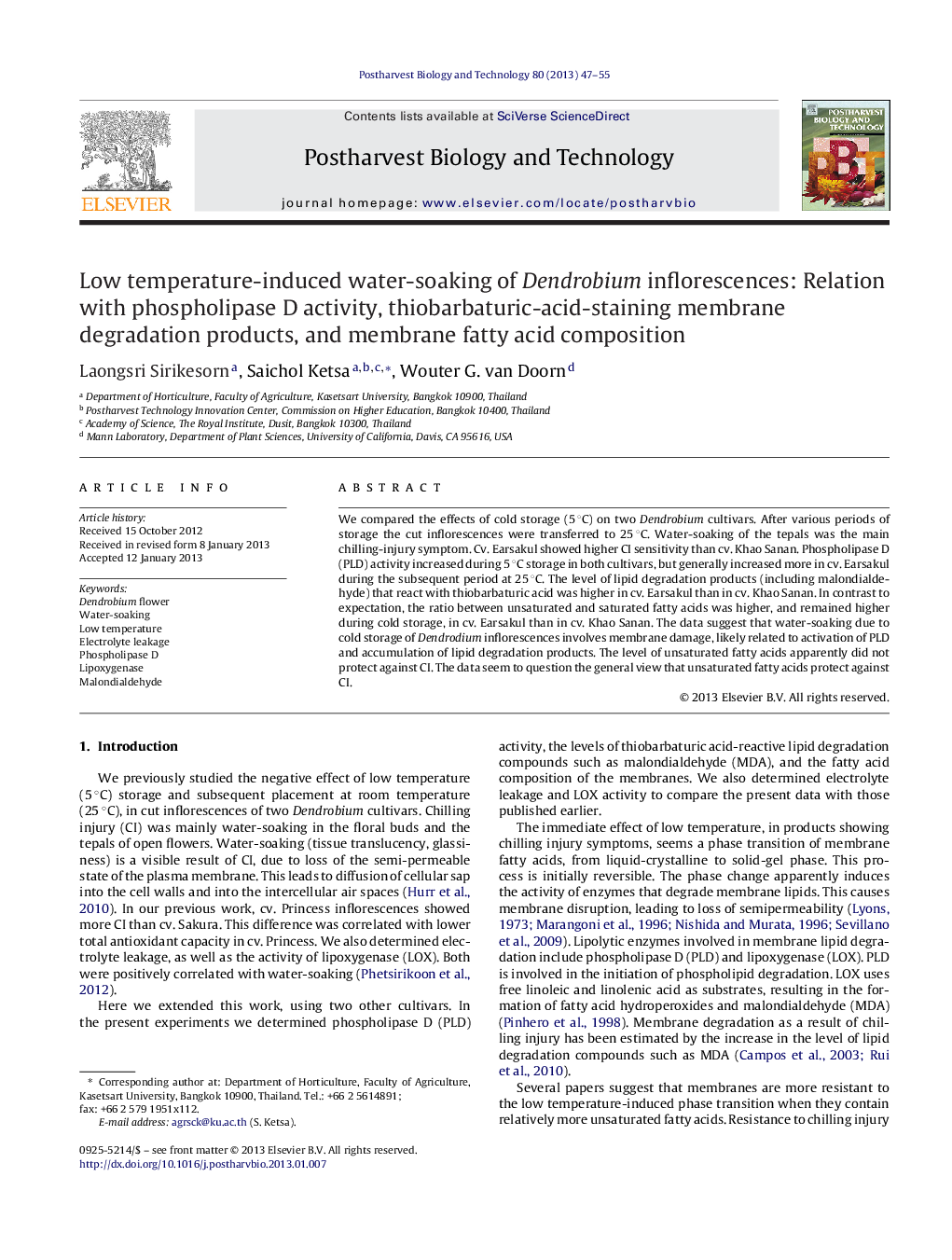| Article ID | Journal | Published Year | Pages | File Type |
|---|---|---|---|---|
| 4518352 | Postharvest Biology and Technology | 2013 | 9 Pages |
We compared the effects of cold storage (5 °C) on two Dendrobium cultivars. After various periods of storage the cut inflorescences were transferred to 25 °C. Water-soaking of the tepals was the main chilling-injury symptom. Cv. Earsakul showed higher CI sensitivity than cv. Khao Sanan. Phospholipase D (PLD) activity increased during 5 °C storage in both cultivars, but generally increased more in cv. Earsakul during the subsequent period at 25 °C. The level of lipid degradation products (including malondialdehyde) that react with thiobarbaturic acid was higher in cv. Earsakul than in cv. Khao Sanan. In contrast to expectation, the ratio between unsaturated and saturated fatty acids was higher, and remained higher during cold storage, in cv. Earsakul than in cv. Khao Sanan. The data suggest that water-soaking due to cold storage of Dendrodium inflorescences involves membrane damage, likely related to activation of PLD and accumulation of lipid degradation products. The level of unsaturated fatty acids apparently did not protect against CI. The data seem to question the general view that unsaturated fatty acids protect against CI.
► We studied chilling-injury in two Dendrobium cultivars. ► Visible chilling injury was water-soaking. ► Phospholipase D activity increased during cold storage, more in the more sensitive cultivar. ► Levels of thiobarbaturic acid-reactive lipid degradation products were also higher in the more sensitive cultivar. ► No correlation was found between chilling injury and membrane fatty acid composition.
